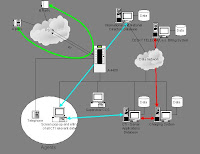CTI sells its range of voice solutions via the NEC Global Sales Distribution Network and works closely with NEC in the Asia Pacific, South East Asia,
Computer telephony integration (CTI) is technology that allows interactions on a telephone and a computer to be integrated or co-ordinated. As contact channels have expanded from voice to include email, web, and fax, the definition of CTI has expanded to include the integration of all customer contact channels (voice, email, web, fax, etc.) with computer systems.
The following functions can be implemented using CTI:
- Calling-line information display (caller's number, number dialed, IVR options)
- Screen population on answer, with or without using calling line data.
- On-screen dialing. (Fast dial, preview, and predictive dial.)
- On-screen phone control. (Answer, hang up, hold, conference, etc.)
- Coordinated phone and data transfers between two parties.
- Call center phone control. (Logging on; after-call work notification)
- Advanced functions such as call routing, reporting functions, automation of desktop activities, and multi-channel blending of phone, e-mail, and web requests.
- Agent state control. (For example, after-call work for a set duration, then automatic change to the ready state.)
Generally, there are two forms of CTI.
First-party call control
First party call control operates as if there is a direct connection between the user's computer and the phone set. An example of this would be a modem card in a desktop computer, or a phone plugged directly into the computer. Typically, only the computer associated with the phone can control it, by sending command directly to the phone.
Third-party call control
Third-party call control is more difficult to implement and often requires a dedicated telephony server to interface between the telephone network and the computer network. Third party call control works by sending commands from a user's computer to a telephony server, which in turn controls the phone centrally.
• Set up
•Deliver (ringing)
• Establish (answer)
• Clear (hang up
Other call events that can be handled by a typical CTI solution include the following:
•Hold
•Retrieve from hold
•Conference
•Transfer


No comments:
Post a Comment